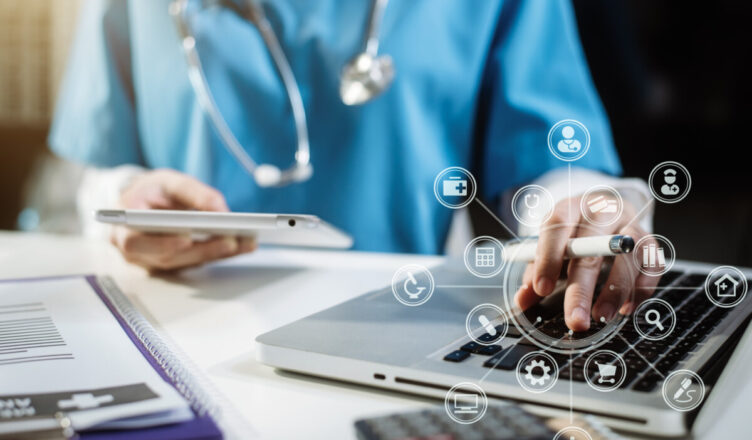With a large array of mobile healthcare applications currently being offered, the challenge for healthcare organizations is to develop or acquire mobile software that is: intuitive and user-friendly, highly-effective and productive, looks good with attractive formats and graphics, and can be sustained.
The mission-critical design considerations supporting-successful proactive patient use of a healthcare mobile app include:
User-Focused Functionality
The user (patient) interface and associated functionality need to be totally aligned with patient expectations and needs to manage their healthcare data and records, healthcare appointments and treatment programs in a secure and efficient manner.
Connectivity
The mobile software should seamlessly operate across a wide spectrum of leading mobile technical environments. The optimum approach to overcome connectivity challenges, associated with mobility, is use of non-session-based software, work while coverage is intermittent, and conserve battery life.
Unique Patient Experience
The patient usability gap between the desktop computer and the mobile technical environment is recognized as wide and deep. Given their limited screen space and tightly integrated input interfaces, mobile devices require design considerations that differ noticeably from desktop apps. Patients and healthcare professionals accessing a mobile device are often in transit and / or out of house or office and likely to be under time constraints or in an environment plagued with distractions.
Mobile apps that require launch of multiple processes, for example, impose non-productive usability barriers that waste user time and effort. Mobile computing and communications require a unique user experience, different from the desktop environment. Healthcare providers should design their mobile development approach to enable creation of software with the capability to reach mission critical information through a simplified user interface and experience, consistent across multiple technical platforms.
Data on Demand
Leveraging push technology is recognized as a critical attribute of mobile app development. While mostly associated with the delivery of user notifications, push and synch technologies deliver added-value by enabling mobile apps to work when users are offline.
A key design factor to consider is that mobile apps need to work whenever and wherever they can provide the most value and allow access to information when and where patients need it, reducing time wasted searching for that data and boosting both engagement and satisfaction rates.
Integrated Software Application Management
A key consideration of mobile software development is life cycle management include: application testing, roll-out, updates and retirement. Mobility brings a new level of complexity to software application management, especially for BYOD (Bring Your Own Device) environments – not usually found with desktop environments. The principal mobility wild card is the frequency of app and OS upgrades in the mobile sphere.
Data Point Interfaces
Mobile software development should avoid creating multiple interfaces or entry points, when accessing other data points, like an EHR (Enterprise Health Records) or scheduling platform. Integration with other apps or portals must be seamless, so that user workflow or daily routine are not adversely affected.
Upgrade Configuration
The design of mobile software need to include the capability to easily upgrade to accommodate new functional use cases and users. A mobile app that looks out-of-date or fails to keep up with increased healthcare user demand will be abandoned, and it will get increasingly harder to lure those users back. Upgrades and new services should be added at the back end, through a dynamic interface.
Integrated Security
Mobile apps are more likely than not to reside on smartphones and laptops that contain personal information and open access to social networks and other destinations in the internet community. To guard against leakage and exfiltration of company information, organizations need to fortify mobile software, and associated content, with the ability to be segregated from personal data residing on the same smartphone or laptop. Device management containerization has emerged as a viable mechanism for segregating work data from personal applications and information.
The key objective of the next phase of user mobilization is the increased accessibility of behind-the-firewall data to support mobile devices. In this environment, security will be a crucial consideration of mobile development. It should not be an afterthought and added into mobile software after deployment. Instead, Healthcare providers need to ensure that mobile apps are constructed from scratch – or amenable to “app wrapping” procedure — to conform to security policies that protect against data leakage or third-party intrusions into the network through malware or ill-intentioned hackers.
HIPPA Compliance
Incorporate HIPPA data encryption, corporate authentication requirements for sign-on, self-updating apps and app expiration policies that enable an app for a predetermined amount of time.
Instructions and Help
Mobile software should provide educational information, reminding or alerting users, recording and tracking health information, displaying and summarizing health information, providing guidance based on patient activity, enabling communications with patients, caregivers, and therapist and other healthcare professionals. The app should provide social networks capabilities and support behavior change in rewards.
Promoting Patient Engagement
Self-management and promotion of patient engagement are essential to successful healthcare management programs targeting patients with high needs and high costs and are associated with improved quality of life, functional autonomy, and decreased hospital use,” the researchers explained. Mobile healthcare apps should empower high-need, high-cost patients to self-manage their health.
